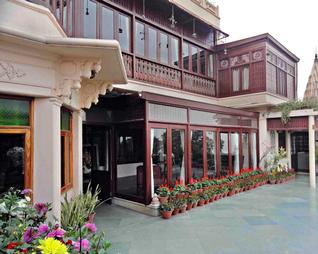 In the world of town planning, urban design and city management, it is very easy to have idealistic wish-lists, but our ground realities ensure majority of them are never realised. Does it mean we should resign in despair? No, instead we need to work at deeper levels to ensure good ideas are implemented. The smart city project, a kind of continuation of the earlier JNNURM, needs to learn lessons from the past and do better this time.
In the world of town planning, urban design and city management, it is very easy to have idealistic wish-lists, but our ground realities ensure majority of them are never realised. Does it mean we should resign in despair? No, instead we need to work at deeper levels to ensure good ideas are implemented. The smart city project, a kind of continuation of the earlier JNNURM, needs to learn lessons from the past and do better this time.
If we locate the idea of smart cities within this perspective, it needs to go beyond merely providing infrastructure. Much has appeared about the project in the media since mid-2014, with 24-hour water and power supply being the most talked about. The basic intention to improve urban amenities; infrastructure; performance and monitoring goes without a debate. Unfortunately, the mechanism to operationalise a smart city is embedded within the existing urban management system, which lacks credibility.
However, the major criticism about smart cities appears to emanate from its exclusive nature, while experts are demanding inclusive modes of governance today.
While the local contexts find the least of mention, the marginal and informal sector which form the majority of city population in India get nothing much from these new agendas.
How a city evolves actually dictates how the city would grow, technically termed as morphology, but the smart city project ignores it, with the danger of best practices failing due to contextual indifferences.
The biggest loss is: another opportunity to implement the recommendations of the Constitutional 74th amendment appears lost forever.
The belief that computerisation is a levelling force to iron out all our cultural diversity; that IT can create pan-India efficiency across our pluralist urban lifestyle; and that technologically advanced urban management can uplift the deprived in our society needs to be demystified, towards both conserving our cultural heritage and resist equating ICT-based practice with sustainability. Majority of our cities have lived well within the local specificities, hence have been smart in some way or other.
No sustainable model
India is yet to boast of any city as a sustainable model, to which end we need to change our mindsets.
During the last decade, many Indian cities have adapted to computers, internet, digital storage, e-mailing, smart phones and such others; but more than applications today we need systemic changes. To that end, non-political user participation is a pre-condition, where the document is weak. The concept of city managers can complement the idea well, if this new cadre can mingle well with a streamlined and honest urban administration. Can the abbreviation SMART stand for Small, Manageable, Accountable, Replicable and Transparent? Then smart cities can also be ideal cities. Many of our cities will go smart anyway by adapting to the computers and competitive lifestyles, but to answer the question whether the public will gain by it or will the private companies benefit, we need to wait for many more years. Until then, we will not know if smart cities are green or not.
 Every child while reading history would have wondered how the pyramids were built, which even today are a construction wonder. The massive walls surrounding Egyptian temples had tapering stone walls, wide at the bottom and narrowing at the top, still standing after thousands of years. Classical temples of Greece continue to attract visitors from world over even now. Many Indian forts continue to be impregnable since they were built. If someone tells us that majority of these were built without any mortars in their joints, can we believe it?
Every child while reading history would have wondered how the pyramids were built, which even today are a construction wonder. The massive walls surrounding Egyptian temples had tapering stone walls, wide at the bottom and narrowing at the top, still standing after thousands of years. Classical temples of Greece continue to attract visitors from world over even now. Many Indian forts continue to be impregnable since they were built. If someone tells us that majority of these were built without any mortars in their joints, can we believe it? All those who are aware of sustainability discourses are familiar with the 3 R’s – Reduce, Reuse, Recycle – a slogan developed for the economically richer nations. The fact that it is more said than done is a sad turn out of things, but in nations like India where they are practised as a lifestyle for ages, we know the value of the three words like a mantra.
All those who are aware of sustainability discourses are familiar with the 3 R’s – Reduce, Reuse, Recycle – a slogan developed for the economically richer nations. The fact that it is more said than done is a sad turn out of things, but in nations like India where they are practised as a lifestyle for ages, we know the value of the three words like a mantra.